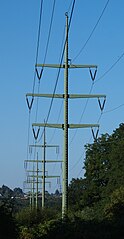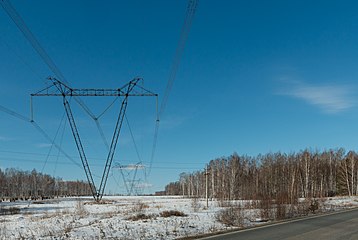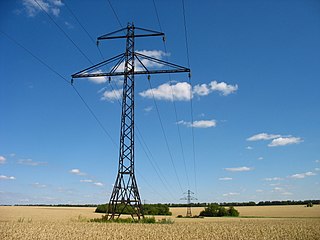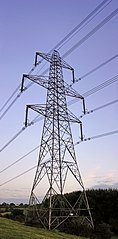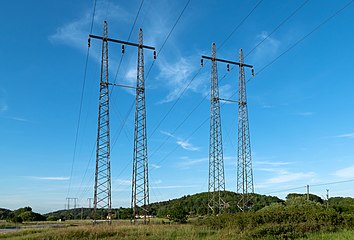Suspension tower
Appearance
This article needs additional citations for verification. (September 2024) |
In an electric power transmission line, a suspension tower is where the conductors are simply suspended from the tower, the mechanical tension being the same on each side.[1]
In this case, the tower is supposed to carry a downward force, and a lateral force, but not a longitudinal force.
These may have, for each conductor, an insulator string hanging down from the tower, or two strings making a "V" shape. In either case, sometimes several insulator strings are used in parallel to give higher mechanical strength. These are used where a transmission line continues in a straight line, or turns through a small angle. In other cases, a tension tower (C or D Towers) is used.
-
Suspension towers of a 110 kV power line in Germany
-
A suspension tower of a 330 kV powerline in Ukraine
-
A suspension tower of a 1150 kV powerline in Russia
-
A suspension tower of a 35 kV powerline in Ukraine
-
A guyed tower in Russia
-
In France, it is common to bend lines at suspension towers with single insulators pulled to the side
-
A suspension tower, UK
-
Suspension towers in Sweden
-
Row of suspension pylons near Amsterdam in the Netherlands
See also
[edit]References
[edit]- ^ R, Anshika (2017-11-09). "Mechanical Design of Transmission Lines | Electrical Engineering". Engineering Notes India. Retrieved 2024-09-11.

